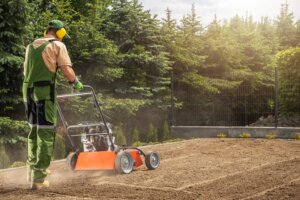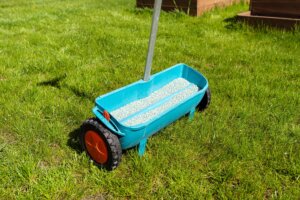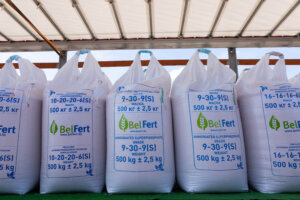According to Penn State Extension, the right lawn fertilizer can increase lawn density by up to 25% and cut down on weeds, especially when it’s rich in nitrogen and phosphorus. For Pennsylvania lawns, proper timing, especially in fall, is what keeps grasses like Kentucky bluegrass and perennial ryegrass healthy and green.
So how often should you fertilize your lawn to get those results without overdoing it? Let’s break it down.
TL;DR: What You Need To Know
- Fertilize cool-season grasses like Kentucky bluegrass or perennial ryegrass 4–5 times per year in PA.
- Warm-season grasses (Bermuda, centipede, zoysia) need just 2–3 applications between late spring and summer.
- Always run a soil test before fertilizing to check nitrogen and phosphorus levels.
- Apply fertilizer evenly and water lightly afterward for better nutrient absorption.
- Avoid fertilizing during dormant periods or extreme heat.
At Terra Lawn Care, we help Pennsylvania homeowners understand what their lawns need through proven fertilization schedules and local expertise, so your yard stays green and healthy season after season.
Understanding How Often to Fertilize a Lawn
Fertilization frequency depends on your grass type, soil health, and growing season. In Pennsylvania, most lawns are cool-season grasses that thrive in spring and fall. Fertilization supports strong roots, greener lawns, and energy storage for winter.
Applying fertilizer too frequently can burn turfgrass or lead to nutrient runoff, while under-fertilizing results in thin, weak grass prone to weeds and drought stress. For timing and rate examples, see the full month-by-month schedule for PA lawns to match application frequency with your grass type.
Warm Season Grasses
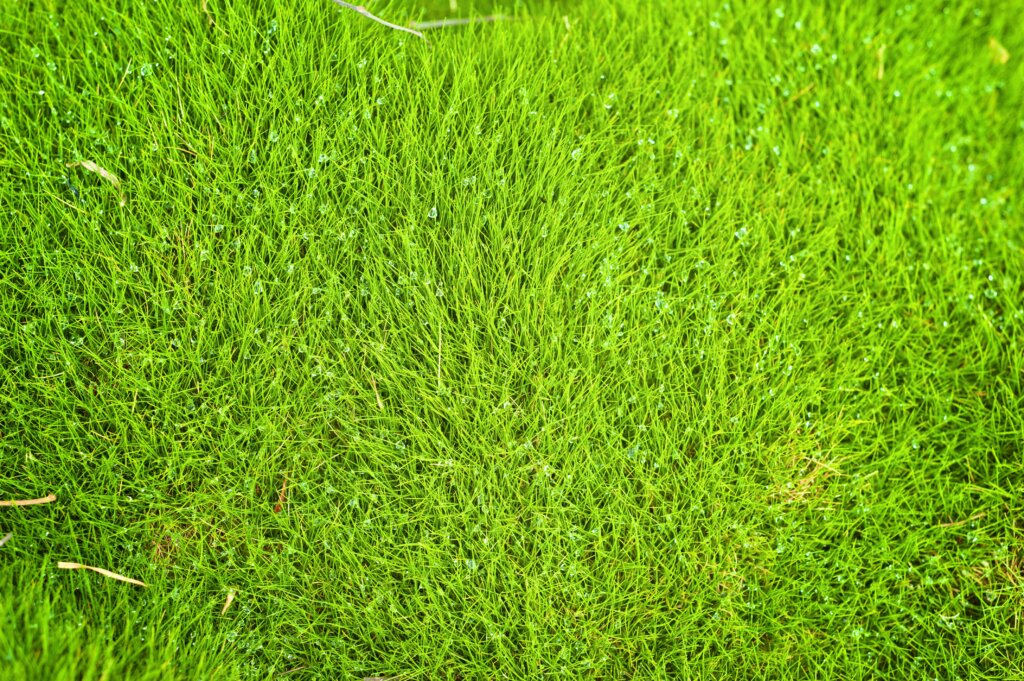
While less common in Pennsylvania, warm-season grasses, such as Bermuda and zoysia, are actively growing during the summer months. Fertilize these lawns 2–3 times from late spring through late summer. Avoid fertilizing during cold or dormant periods to prevent wasted nutrients.
Tips for warm-season grasses:
- Use quick-release nitrogen for fast green-up.
- Apply fertilizer when grass blades are dry but the soil is moist.
- Follow up with watering to help nutrients penetrate the root system.
Cool Season Grasses
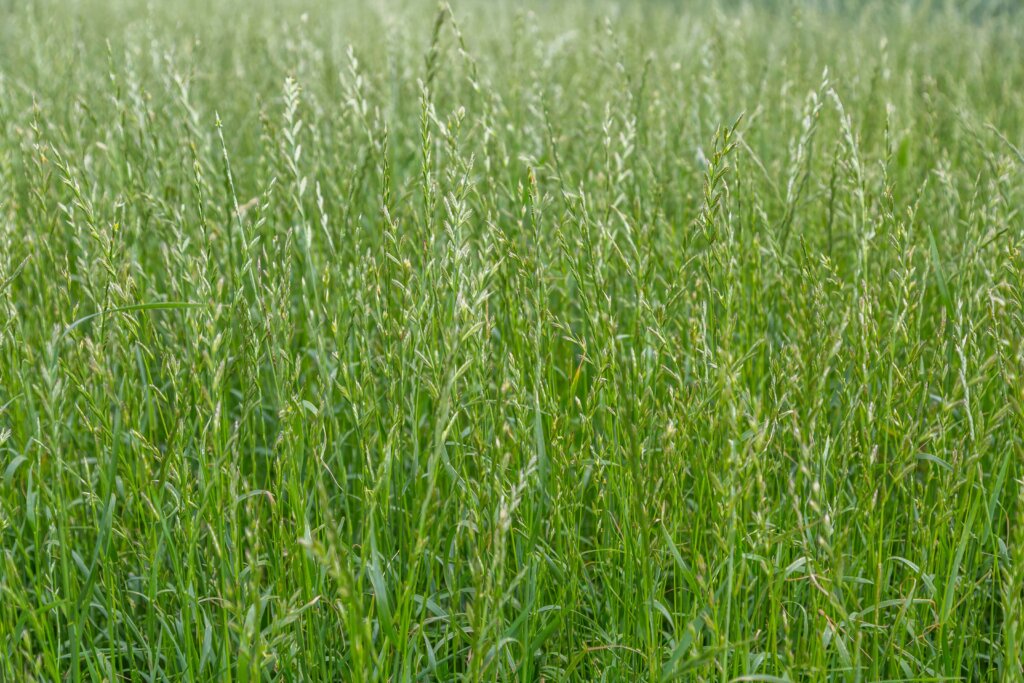
In Pennsylvania, cool-season grasses such as Kentucky bluegrass, perennial ryegrass, and tall fescue benefit from 4–5 feedings per year.
Timing is critical:
- Early spring: Apply a light dose of fertilizer to jumpstart growth after winter.
- Late spring: Feed again to sustain growth before summer heat stress.
- Late summer / early fall: This is the most critical application to build strong roots and store energy for winter.
- Late October to early November: Optional fast-release nitrogen can give your lawn a final green-up.
Soil testing is recommended before each major application to adjust nutrients like phosphorus, potassium, and micronutrients according to your lawn’s needs.
Spring and Summer Fertilization Schedule
The right fertilization schedule in spring and summer helps maintain a healthy, greener lawn without overfeeding. Use the table below to guide your timing and fertilizer type.
| Season | Cool Season Grasses | Warm Season Grasses |
|---|---|---|
| Early Spring | Apply light lawn fertilizer once growth resumes; avoid cold, wet soil to prevent poor nutrient uptake. | Wait until the soil warms and grass actively grows before applying fertilizer. |
| Late Spring | Use slow-release fertilizer to sustain color and build strong roots before heat stress. | Begin your main feeding with quick-release nitrogen for steady growth. |
| Summer | Fertilize lightly or skip if stressed; focus on watering and mowing. | Continue fertilizer application every 6–8 weeks during peak growth; stop by late August. |
Following this fertilization schedule ensures both cool-season and warm-season grasses get nutrients when they need them most for a healthy, resilient lawn.
How to Apply Fertilizer
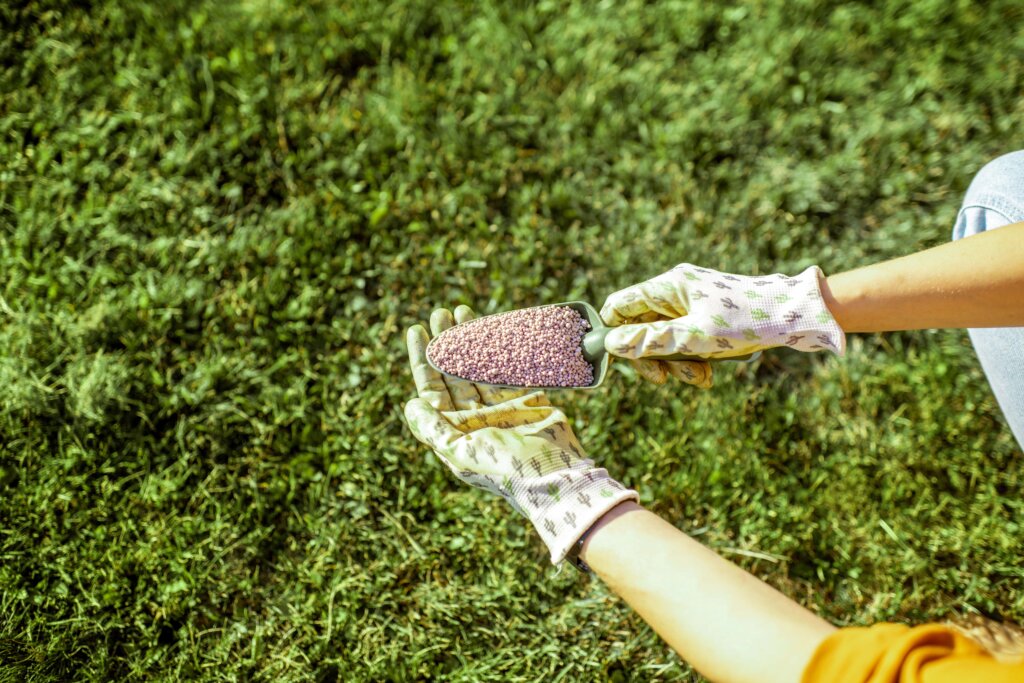
Proper fertilizer application keeps nutrients evenly distributed for steady growth. Use a spreader to spread granular products and follow label directions. Most fertilizers recommend about one pound of nitrogen per 1,000 sq. ft. per application.
Tips for best results:
- Water lightly after fertilizing to help nutrients mix into the soil and be absorbed.
- Mow a few days before applying to improve penetration.
- Avoid fertilizing during drought or intense heat to prevent burning or nutrient flush.
- If rain is forecast, wait until after it passes to reduce runoff.
Fertilizing Your Lawn in Fall
Fall is one of the most important times to fertilize your lawn in Pennsylvania. Fall fertilization helps your turf recover from summer stress and build strong roots before winter. Apply fertilizer in early fall, then make an optional final application in late October or early November.
Choose a blend with potassium to strengthen your lawn and prevent winter injury. Fall feeding also helps crowd out crabgrass and weeds the following spring, keeping your turf thick and healthy.
3 Signs You’re Fertilizing Too Often
- Grass blades burn or turn yellow.
- Growth breaks normal patterns, requiring extra mowing.
- Runoff or nutrient loss after heavy rain.
Stick to your fertilization schedule and use soil test results to guide adjustments instead of guessing. Following a balanced plan helps your lawn maintain a steady nutrient supply without waste. If you’re unsure about regional lawn care needs, explore the local lawn care service areas in Pennsylvania to find guidance tailored to your location.
Fertilizing Your Lawn for a Greener Lawn Year-Round
Knowing how often to fertilize lawn is key to keeping a healthy, green yard in Pennsylvania. Established lawns benefit most from timely fertilizer applications in early spring, late spring, and fall. Choose synthetic fertilizers or blends that match your soil test and grass type for the best results.
Even a single application at the right time can boost color, roots, and overall plant health. For expert care and proven results, contact Terra Lawn Care or explore our lawn fertilization services today.
Frequently Asked Questions About Fertilizer Application
Wait around 4 to 6 weeks between each lawn fertilizer application. This allows the plant roots to absorb nutrients without being overloaded. Applying fertilizer too soon can cause nutrient burn or excessive growth, especially if nitrogen levels are high. Use a spreader to apply evenly and maintain a steady pace to avoid buildup in certain areas.
Most lawns benefit from feeding 3 to 5 times a year, depending on the type of fertilizer and your lawn’s condition. Most fertilizers list ratios like 16/21–40, which show the balance of nutrients such as nitrogen, phosphorus, and potassium. Follow product directions carefully and water lightly after each feed to help nutrients move into the soil.
October isn’t too late, but timing depends on your region and grass type. For St. Augustine grass, it’s best to stop fertilizing by early August, while cool-season grasses can be fertilized up to late fall. Apply a fertilizer rich in nitrogen to help strengthen roots before winter. Just make sure the ground isn’t frozen, and you can still spread the product evenly.
Yes. Over-fertilizing can damage your lawn by burning the grass or promoting weeds like crabgrass. Stick to applying fertilizer every 1/2–4 weeks, depending on your chosen mix and weather conditions. If your grass looks pale or growth slows, that’s a good example of when it might need another feed, but always follow a consistent process instead of applying on impulse.

